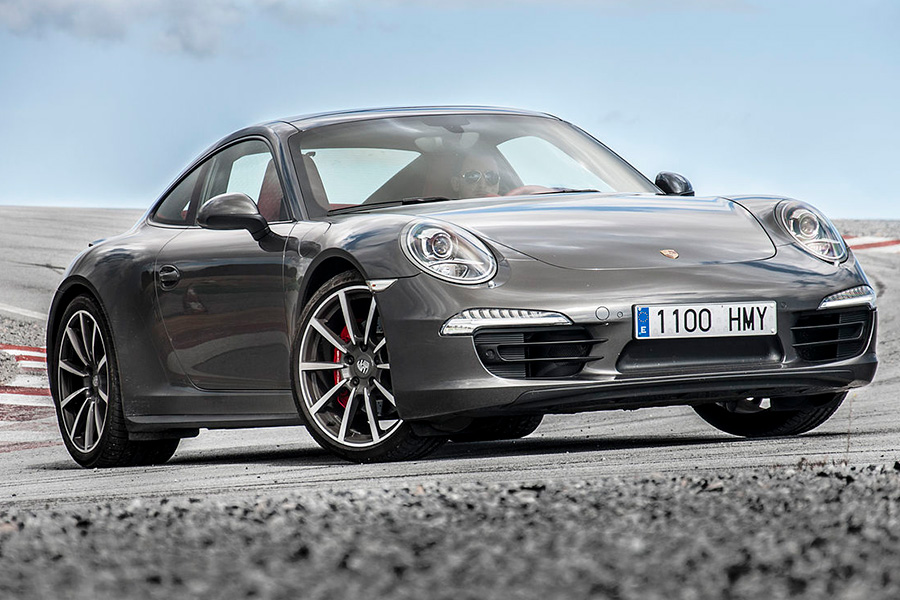 The Porsche 991.1 has Changed the 911 Game
The Porsche 991.1 has Changed the 911 Game
[Updated for 2021] Its never easy to update a legend but Porsche took up the challenge as it replaced the beloved 997 with the new Porsche 991. The 991 still had the look of the classic 911 profile but it was longer, lower, wider and bigger than the previous model it replaced. Undoubtedly its a better car then the 997 in terms of performance and technology but it moved the 911 to a larger grand touring size and left the little brother Porsche Boxster/Cayman as the purer sports car in the family lineup.
Because the 991 had a bigger dimension the car look changed, specifically in the slimmer taillights and the 3.9 inches longer wheelbase that stretched out the car’s side profile. This was more noticeable in the stretched windshield and revised roofline areas. The wider track did improve the handling of the 991 from its predecessor which was a bonus.
In the interior, the Porsche 991 came with the latest ergonomically designed cockpit that was first seen in the Porsche Panamera. Powerwise the 991 kept the same DFI engines from the 997.2, known as the 9A1 engine. This engine has been considered a success and has been proven in the 997.2 to be a robust and solid engine for performance and reliability.
Porsche 991.1 and the 991.2
There are two versions of the Porsche 991. The first generation came out in 2012 (and by circumstance were being sold with the last years Porsche 997 models) and ranged from 2012 to 2016.
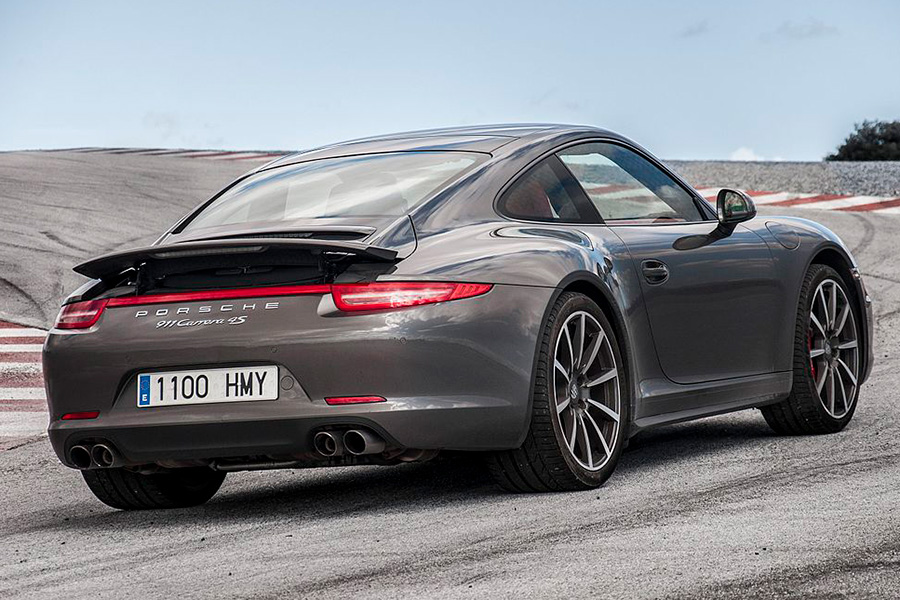
In 2017 Porsche came out with the Porsche 991.2 which now included turbos in all 911s. So the 991.1 cars are the last normally-aspirated Carreras every built by Porsche! Regular Carrera and Carrera S now had turbo-charged flat 6-cylinder engines. This development may have an effect on the resale values of the 991.1 models in the future but we won’t really know for sure until a few years worth of market data is seen. The prevalent thought is that the normally aspirated 991.1 will be popular in the future with buyers who enjoy the sound and power delivery of normally aspirated engines compared to the newer forced induced models.
Our market report will strictly focus on the 991.1.
What 991.1 Models to Choose
Every new generation of the 911 brings apprehension to the staunch 911 traditionalists. This was definitely the case with the 996 moved to a water-cooled engine in the late 1990’s. The big fear for the 911 faithful was the increased size of the Porsche 911 and the move to the electronic steering.
Porsche proved itself with the 991.1 that it’s still on top of its game. While the 911 did become a bigger car, it was still sporty and now had more comfort than the previous model. It has been debated that the 911 no longer is the sports car of the Porsche line-up – the Cayman is now just as capable of a performer in GT4 form – but its own GT versions are still considered world-class leaders in handling and performance.
The new increase wheelbase did improve stability compared to the previous generation 997 and the wider front track help cut understeer. New technologies like the PDCC helped reduce body roll, while the other optional tech PTV (Porsche Torque Vectoring) has an electronically controlled rear differential in place of a mechanical unit.
The 991 is a whole new body build with new door-mounted mirrors, better wind noise materials in the doors and frames, a longer wheelbase and wider front track. While physically bigger, the extensive use of aluminum in the body made the Porsche 991 100 lbs lighter than a 997 while being more rigid and stronger than before. The Cabriolet models received a redesigned panel bow top to become a more coupe-like roofline design and the soft top was quieter and faster to deploy than the 997.
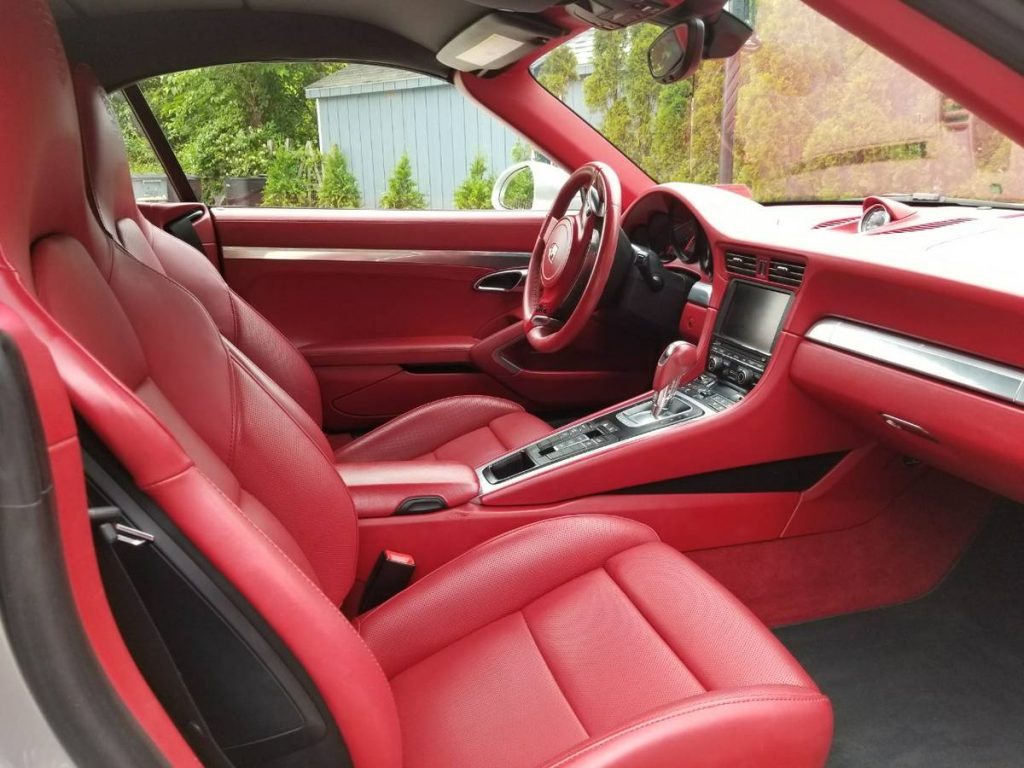 Inside the cockpit, the Porsche 991 received a Porsche Panamera like center-console with numerous buttons and controls. In the center, the Porsche 991 came with the latest PCM system with a touch-screen for controls and the latest technology features including streaming Bluetooth and navigation. While most 991 were ordered with the PDK transmission, the 991 still retained the option to be bought with a 7-speed manual which delighted the faithful.
Inside the cockpit, the Porsche 991 received a Porsche Panamera like center-console with numerous buttons and controls. In the center, the Porsche 991 came with the latest PCM system with a touch-screen for controls and the latest technology features including streaming Bluetooth and navigation. While most 991 were ordered with the PDK transmission, the 991 still retained the option to be bought with a 7-speed manual which delighted the faithful.
Porsche Carrera and Carrera S
The Carrera is the base model in the 991. In 2012 Porsche released the Carrera and Carrera S versions. The Porsche Carrera came with a flat-six engine at a smaller displacement than the previous Carrera S engine in the 997 but it was just as powerful. The 3.4-liter engine in the 991 Carrera produced 350 hp (very close to the 385 in the 997.2 Carrera S) while the 991 Porsche Carrera S now came with a 3.8-liter engine that produced 400 hp. Fuel economy was improved in both models and an Auto Start/Stop was placed on both engines.
The 991 Carrera came with standard 19-inch wheels with 245/35 tires in front and 285/35 tires in back. The Porsche Carrera S came standard with 20-inch wheels of the same width but wrapped in 245/35 tires in front and 295/30 inches in the rear. PCCB carbon-ceramic brakes were still an expensive option to add on both models.
As usual, the Carrera and Carrera S came in coupe and cabriolet variants.
Porsche Carrera 4 and Carrera 4S
In 2013 Porsche introduced the all-wheel-drive versions of the Carrera and Carrera S respectively. The Porsche Carrera 4 and Porsche Carrera 4S were mechanically identical to their rear-drive only siblings but had wider rear fenders (1.7 wider per side) to correspond with a wider rear track that was unique to the all-wheel-drive cars. Power was the same as in the Carrera and Carrera S models.
The 4 and 4 S also had a unique light bar that ran between the two taillights that also visually distinguished the all-wheel-drive cars from their siblings. PTV was standard on the 4S models and was available as an option on the C4.
Both cars came in coupe and cabriolet variants.
Porsche Targa
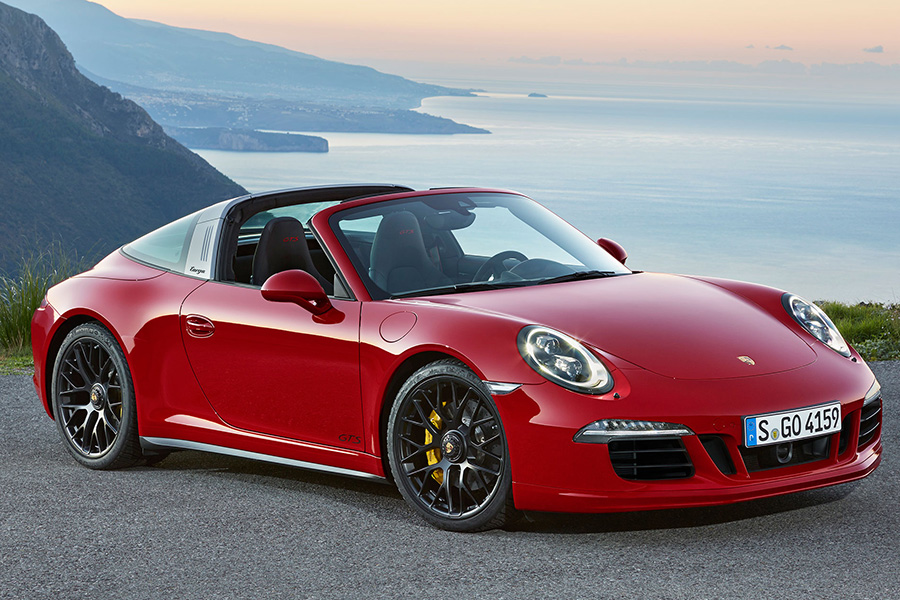
In 2014 Porsche introduced a Targa in the 991 model range. This Targe was different from the versions in the 993, 996 and 997 which all featured a sliding glass roof. This 991 edition had a fully automatic top that featured a fabric section over the seats, a fixed roll-over bar, and wraparound rear glass window. Visually it looked familiar to the 1980’s Porsche 911 Targa.
When activated the glass rear window tilted up to take in the soft top area and fold it in. When the rear window closed in again, the Targa now retained the old-school Targa look of a fixed bar and rear glass but no top above the driver and side passenger.
Porsche add a Targa 4 and Targa 4S version of the Targa as well as the Targa 4 GTS model.
Porsche GTS
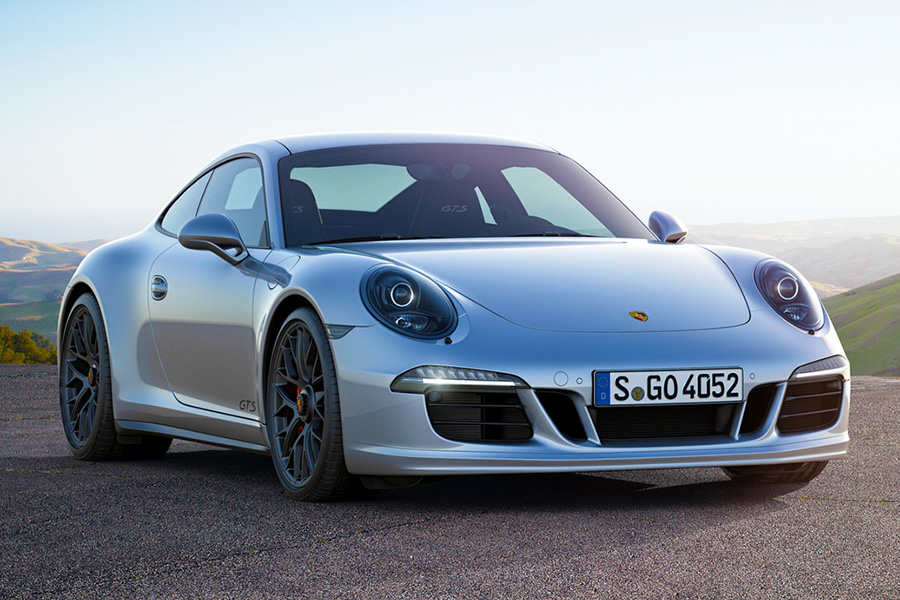 Porsche continued the tradition of a GTS model in the 991. The 997 GTS was an exercise in marketing and option packaging but it worked out wonderfully with the 997 GTS. Porsche has since used that gameplan to make a GTS variant in every model in their lineup. It continues here as the Carrera GTS is offered as both a coupe and a Cabriolet and in rear-wheel-drive and all-wheel-drive (Carrera 4 GTS) configurations.
Porsche continued the tradition of a GTS model in the 991. The 997 GTS was an exercise in marketing and option packaging but it worked out wonderfully with the 997 GTS. Porsche has since used that gameplan to make a GTS variant in every model in their lineup. It continues here as the Carrera GTS is offered as both a coupe and a Cabriolet and in rear-wheel-drive and all-wheel-drive (Carrera 4 GTS) configurations.
The GTS is slotted between the Carrera S and the 911 GT3. It comes with 430 hp and a host of options as standard including PASM, Sport Chrono, PTV, Sport Exhaust, an updated shifter, 20-inch center lock Turbo Wheels. On the exterior, it has visual changes not available on the Carrera S including a sport front bumper, smoked headlights, and taillights, different external mirrors and tons of GTS badges on the body. Instead, it has the standard option of Alcantara steering wheel and seats.
Porsche 911 Turbo and Porsche 911 Turbo S
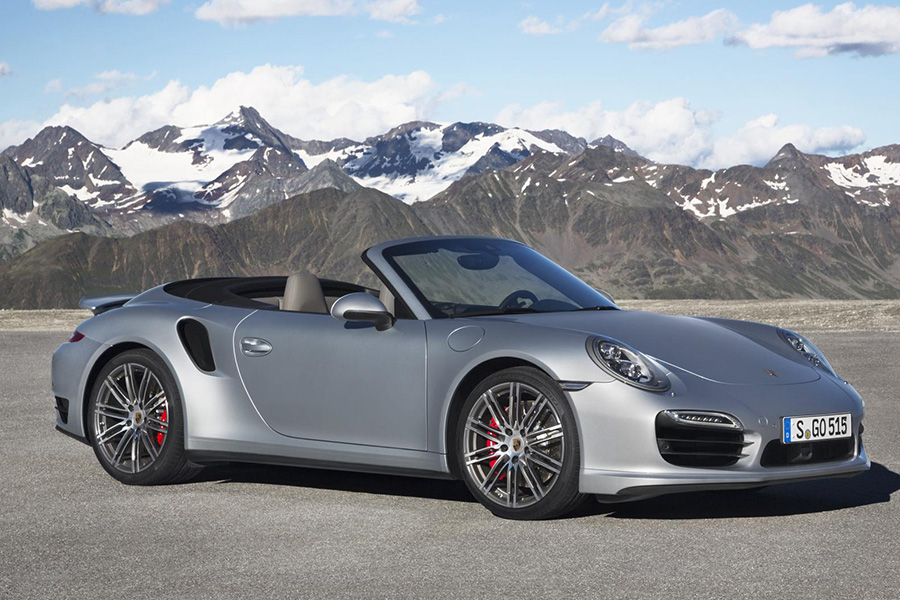 In 2014 Porsche introduced the 991 generation 911 Turbo. Some new technologies the Turbo brought to the table was adaptive active aerodynamics which offered moving front splitter and rear wing positions, and 4-wheel steering (which was also available on the GT3).
In 2014 Porsche introduced the 991 generation 911 Turbo. Some new technologies the Turbo brought to the table was adaptive active aerodynamics which offered moving front splitter and rear wing positions, and 4-wheel steering (which was also available on the GT3).
The 2014 Porsche 991 Turbo had a 3.8-liter engine that produces 520 hp and 487 lb-ft of torque. It was super fast with 0-60 times of 3.2 seconds. It was only available with the PDK transmission and all-wheel drive to get all the power down.
The 991 Turbo received exterior body work including an aggressive front bumper, extra wide rear fenders (even wider than the 4S models) and wider 20-inch wheels.
Debuting with the Turbo was the Porsche 991 Turbo S which came with 560 hp. In addition to the extra hp, it also had added boost and boasted standard equipment: PDCC, PCCBs, Sport Choron and Unique 20-inch center-lock wheels and LED headlights.
Porsche GT3 And Porsche GT3 RS
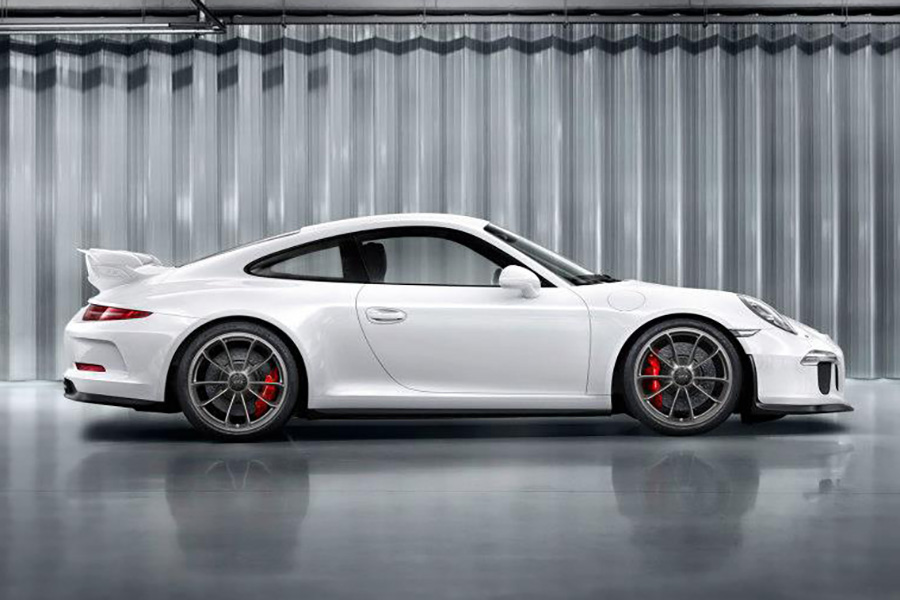 Porsche continued the tradition of producing race bred 911 known as the GT cars. The first was the Porsche 991 GT3. Previously all GT cars had the GT1-derived “Mezger” engine which is considered the greatest Porsche engine ever made. The 991 GT3 received a new power plant that took the standard 9A1 motor but added extensive internal modifications to produce a normally-aspirated dry-sump 3.8-liter boxer engine that revs to 9,000 rpm and pumped out 475 hp.
Porsche continued the tradition of producing race bred 911 known as the GT cars. The first was the Porsche 991 GT3. Previously all GT cars had the GT1-derived “Mezger” engine which is considered the greatest Porsche engine ever made. The 991 GT3 received a new power plant that took the standard 9A1 motor but added extensive internal modifications to produce a normally-aspirated dry-sump 3.8-liter boxer engine that revs to 9,000 rpm and pumped out 475 hp.
Like the Turbo it came with the rear-wheel steering and was only available with the PDK transmission (as 911 die-hards have celebrated, news have come out that the 991.2 GT3 offers a manual transmission besides PDK).
The GT3’s suspension was developed totally from scratch and is separate from the traditional 911’s setup. The GT3 got special PASM, PTV Plus, updated electric power steering and rear brakes that featured larger rotors. PCCBs were still optional.
Outside the GT3 was easily identifiable by it large fixed rear wing, and engine air intakes in the back. The front had a protruding splitter and large air intakes. The car also came with unique forged-aluminum center-lock 20×9 and 20×12 wheels.
Porsche has also come out with a GT3 RS, which has increased the performance envelope and the price.
Other Porsche 911 Models
Porsche has a history of producing smaller run 911 variants and so far with the 991, it has not been an exception. The most famous or infamous one so far is the Porsche 911 R, which was a special limited run 911 GT3 RS mated to a specially made 6-speed manual and was only made in numbers of 991 total. But the issue was that it was a GT3 RS setup without the racer body exterior body, special body colors and it came with the manual, which wasn’t available previously in any 991 GT model before (since the launch of the 911 R, Porsche has now given word a manual is now an option in the 991.2 GT3). All 991 911 Rs where sold out before the public got even the chance to order one, and has now been placed on the 2nd hand market for 100% plus mark up.
Options To Have
Porsche is known to have tons of options available to a buyer, so you will never quite see the same car exactly the same. Some 991.1 may come in custom exterior/interior combinations, while some cars may have basic options and others have every option checked off. These are the options we consider must-haves when looking for a 991.1.
- Sports Chrono – You will know instantly the car has Sports Chrono by seeing the ‘wart’ on top of the dashboard. This ‘wart’ is the stopwatch that comes with the Sports Chrono package. But why you really want this option is due to what’s underneath – it adds a button (Sports button) that allows you to sharpen throttle response and for Turbos gives an over boost functionality. This option works very well with cars with PDK as it improves acceleration and allows launch control on PDK cars.
- Porsche Sport Exhaust – The regular exhaust for the 991 is ok, so to improve the sound quality you need the Sport Exhaust. This option will open up the back pipes and artificially create a more aggressive tone for your 911. It’s worth for the soundtrack alone.
- SPASM with PTV – the PASM sports suspension is only available with the PTV (Porsche Torque Vectoring) and the 20-inch wheels. The ride height is lowered by 20 mm compared to the 10 mm with the standard PASM option. The springs are harder and the anti-roll bars in front and back are stiffer. While this sounds like it adds to a very hard ride, it’s not too firm for daily use and instead creates a great driving dynamic for your 991 while it lowers the car so cosmetically it looks great (smaller wheel well space between the fenders and wheels looks better on all cars)
Besides, that Porsche offers so many different options that its all buyer preference.
Current Market Pricing
The oldest 991.1 models are now 5 years old and the 991.1 range is going into the typical depreciation curve all Porsche cars have. The Porsche 991.1 is a modern Porsche and has a lot of complexity built into it but has been impressively problem free to date. Most owners have only had to do basic maintenance service to their cars including oil changes and changing brakes/tires. We’ll see if more issues arise as the cars age but so far the 991.1 appears to be a very rock solid and reliable car to own.
The biggest issue is that as a modern Porsche it is challenging for local Porsche mechanics to handle the new technologies that are incorporated into the Porsche 991. The most significant issues are the need for new factory diagnostic computers which are needed for the 991 and older computers will no longer offer support to these cars. The new systems will be needed for even the basic maintenance required including oil changes, flushing of the cooling systems and changing of the brake fluids.
Prices for the Carrera and Carrera S models have fallen dramatically and Carrera S models with low mileage are now found in the low $60,000 range/high $50,000 range.
Turbos and the GTS models are fairly new and have kept their values so far, but as time goes by we expect a greater depreciation on those models especially the Turbos. The Porsche Turbo has always historically been known to lose the most value compared to its original price (but to be fair the Porsche Turbo is also usually the most expensive model sold when new).
The only cars that still are keeping their value are the GT3 and GT3 RS models but with the new 991.2 GT3 models coming up for sale and offering manual transmissions there may be a rapid drop in pricing for the 991.1 GT3. More 991.1 GT3’s were sold compared to the previous generation 997, and has the potential to have a larger inventory of cars for sale on the 2nd hand market.
Our recommendations would be:
- Buy the best condition and mileage 991.1 you can afford. Best deals will be on the Carrera, Carrera S models
- We still recommend a pre-purchase inspection (PPI) on any car you are interested in buying to ensure it hasn’t been crashed or abused
- Best value car is still the Carrera 4S. These cars usually are heavily optioned when new and offer a high-performance envelope especially with the all-wheel-drive system.